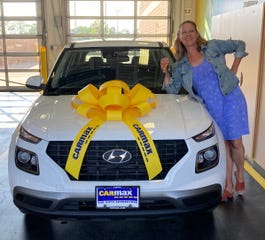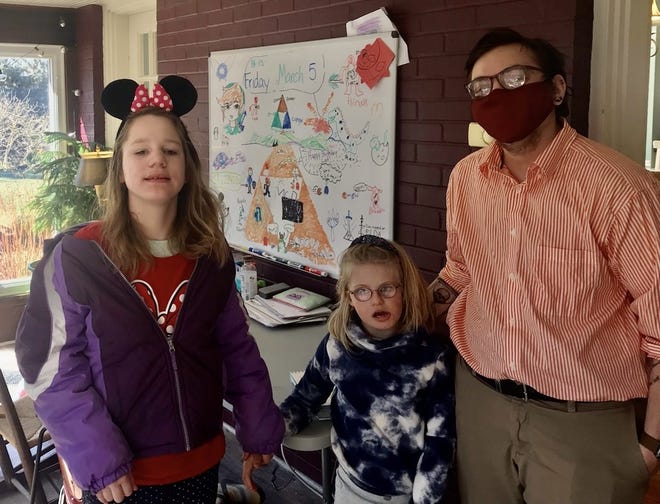“Your friendship may well be lifelong,” I tell students when I see them hit it off in my classes. That they might also become close with each other’s families is an added bonus I let them discover for themselves.
In the winter of 1992, I met Jen Tressler in a plant pathology class on Ohio State University’s Ag campus, where students working on degrees in agriculture and veterinary medicine were seemingly sequestered.
Our professor was nearing retirement and while I cannot remember his name, I easily recall his face. Generous eyebrows, as dark as his thick hair was white, valanced his bright eyes. His nose, below which he wore a generous smile, was sturdy enough for the occasional tug he gave it. Syrian grandparents were elemental in the overall composition.
Plant pathology fulfilled a capstone science requirement following two courses in botany. We studied plant diseases, their vectors and how to reduce or eliminate them. Not surprisingly, the roster was largely filled with men intending to farm after college.
The oddballs in the course, Jen (who was also taking the course for the capstone requirement) and I sat together. A few weeks into the quarter, we felt as though the class was sponsored by a major pesticide company — the solution given to almost every disease and pest was to apply noxious chemicals.
Jen and I discussed alternative approaches to pesticides with our professor. His eyes twinkled as he listened closely before suggesting, as any wise teacher would, that she and I teach a class on the subject.
I’m not sure what, if any, impact our hourlong presentation had on the other students, but it cemented our friendship.
After we graduated from OSU, Jen worked at an organic farm in Kansas before spending two years in Honduras with the Peace Corps, where she taught farmers sustainable practices. When she returned, she met and married Milan, they changed their last names to Marvelous and settled in Philadelphia.
For eight years, Jen and I stayed connected through landlines and letters written with ink and paper. But since January 2000, when I moved to Northeast Ohio, Jen has visited me regularly when she stays with her parents, who live in Painesville.
That same year we taught a class together, Jen’s parents drove down from Painesville and took us to lunch. I found her mom, a first-grade teacher who is now retired, very energetic and engaging.
But it’s Mr. Tressler who I’ve come to know over the years.
Until 2003 I lived in Cleveland, just off the Shoreway exit for West 49th Street. Mr. Tressler, who worked in facilities for the Cleveland Metropolitan School District, stopped by for coffee and a chat whenever he was called out to Max Hayes High School, just blocks from my house.
Born and raised in Reading, Pennsylvania, Mr. Tressler comes off as no-nonsense and a bit crusty. I’ve only heard about his temper, yet understood it to be as readily available to him as a favorite hammer is in the tool belt of a carpenter.
So, too, is kindness. Once, on a sleety January day when I was 8 months pregnant, Mr. Tressler changed a tire on my Toyota Sienna (no easy feat), on the Route 8 ramp behind The Chapel at the University of Akron.
Like many seemingly gruff characters, scratch the surface and you’ll find Mr. Tressler a softie, especially with his family. That’s become even more apparent in the months since he was diagnosed with Alzheimer’s.
After moving to Akron, I’ve met up with Jen and her dad many times when they come to town for our tag-popping emporiums. In case you didn’t know, Akron has killer thrift stores — clearly better than those in Philadelphia or Cleveland.
A couple of weeks ago, I met up with Jen, her eldest daughter and Mr. Tressler at Village Discount on Waterloo Road.
“I’m pretty sure he’ll remember you,” said Jen on the phone earlier that day, making my stomach drop.
But, boy, did he.
Much of the afternoon, Mr. Tressler reminded me of things I’d forgotten until he shared them. Like a lunch years ago at a downtown restaurant where he loved his hamburger.
“I have dementia, you know,” he told me when he struggled to remember the name of the restaurant. (It was The Lockview.)
Never overweight, but of sturdy, Ukrainian stock (Jen’s daughters call him “Gigi” and her mom “Baba”), Mr. Tressler is now considerably thinner. As a result, the blue of eyes, so much like those of my friend, really pop and he looked dashing in his Carhartt jacket and brimmed felt hat.
After thrifting, we ate lunch at my house. I told Mr. Tressler his eyes were as brilliantly blue as those of Paul Newman’s. He wanted to know if Newman was still alive.
“Sadly, no,” I told him.
When they left that afternoon, Mr. Tressler, whose first name I only recently learned is John, lingered at the doorway after Jen and her daughter had gotten into their car.
“Well, it’s been good knowing you,” he told me, holding my gaze with his own.
“Take care, love,” I replied as I struggled to stay dry-eyed in the face of Jen’s father, a man who long ago became my friend, too.
This was published in the Akron Beacon Journal on Sunday, February 6, 2022.


































